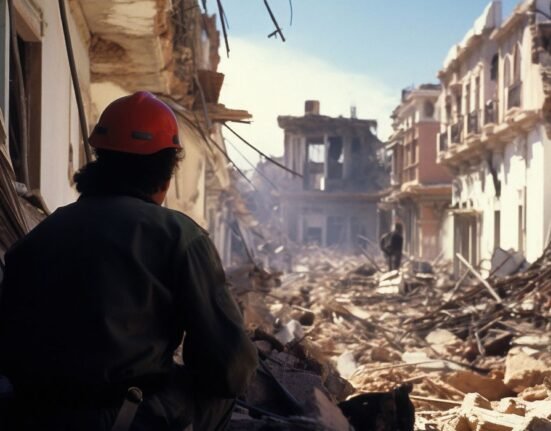As a child, were you subjected to situations that demanded a lot more than you could offer? For instance, children are academically burdened to perform brilliantly. In such situations, some are able to adjust to these demands, some fail, some ignore it, or some are forever lost in this process. What should or should not be expected from a child? Do we have a parameter or a scale to judge a child’s maturity? If yes, are we considering the emotional intelligence, social context, or psychological state of the child?
Let us take these questions in context with our legal system. Within legal framework in India, the child rights act looks conflicted as to who is the child and on top of it is the question of who is the “mature” child. I say this in context of the recent amendments put forth in the juvenile justice (care & protection of children) 2015, that permits juveniles between the ages of 16-18 years to be tried as “adults” for heinous crimes. Similarly, The Protection of Children from Sexual Offences (POCSO) (amendment), 2019 has sections 4 and 6 that allow the judicial system to give death penalty to children below 18 years in case of penetrative or aggravated sexual assault. In these statements, there is an assumption of who is a mature child. We are proposing that maturity is not just cognitive. There are more elements to it and the legal system should consider the other aspects too.
Many of us are in favour of death penalty under the new POCSO act, 2019. People feel children are growing too fast. They mature very early and understand better these days. Let us pause and analyse the data shared with you. In a national study on child abuse in 2007, the Ministry of Women and Child Development found that two out of every three children had been physically abused and most children did not report the matter to anyone; 53.22 per cent of children reported having faced one or more forms of sexual abuse; 50 per cent of cases of abuse are by persons known to the child or in a position of trust and responsibility. This indicates the way our children are being treated. The impact of such incidences can be severe. The cycle of violence or intergenerational transmission of violence is a known fact. Such children are always at greater risk of developing violent or delinquent behaviour or become accustomed to violence even as adults. This indicates that an intervention is needed that can allow the child to be more aware of his/her surrounding than to make our existing law more stringent. Would employing a life threatening punishment solve the larger issue we’re facing? What is more important is to also figure why these children are not safe within family or familiar spaces? Why are they not able to talk about abuse?
To be able to answer these questions, we again need to go back to the roots of our understanding of the term child and maturity. The UNCRC in its article 12 recognises that a child can assess and understand implications of a particular matter and this should be kept in mind when determining the individual capacity of the child. The typical cognitive definitions that law complies by, defines childhood through biological developmental stages. Each stage is accompanied by some achievement, be it motor, or cognitive. All these stages abide by the age. In the name of maturity, we have put a certain age limits. These age limits are synonymous with the level of responsibility, decision making that a child can take or make. The life changing decisions are bracketed into numbers. In Indian context, there’s age that determines when you go to college, when you’ve got to marry, when should you have children, when should you retire. The list is endless. This “should be” connotation is the problematic area.
In the legal context, how we define a child affects how the court or the legal mechanism deals with the accused or the victim. If we look closely, there are n number of cases where these age-linked developments do not take place. Plus these biological stages do not consider other aspects as various factors influence development, including gender, culture, the environment, and resources. Thus, there is a need to shift from describing decisional capacity away from age to considering each child’s unique circumstances that shape her/him (Alderson, 2007; Havenga & Temane, 2015). It is time that every individual associated with a child understands her/him as closely as possible to avoid interpretations based on hollow cognitive and biological understandings alone.
The deliberation and strong theoretical background is needed now more than ever as within the law, there are varying understandings. Under the Immoral Traffic (Prevention) Act, 1986, a child means a person who has not completed 16 years of age and a minor means a person who has completed 16 years of age but not completed 18 years. Under the plantation labour Act of 1951, a child is someone who has not completed her/his fourteenth year. The Age of Majority Act 1875 defines child as anyone under the age of 18 years. If the argument is made that these definitions vary because these are different acts then are we trying to say that we are practicing law as per our convenience? Are children who commit crime have no mens rea and are doli incapax? This is how legal space sees a child and the moment, the moment we saw the uproar in Delhi rape case of December 2012, the nationwide protest for death penalty made the waves for the minor involved in the heinous crime. Suddenly, this minor was aware and very much conscious of what he did. This convenience has to shift.
The age-linked “should be”s have to be explored more from psycho-social perspective too. It is high time to do an intensive research to be able to define the ill-defined, elusive construct of child and maturity and to understand why a child commit crime at first place. If children do not understand what they’re committing is wrong or becoming a victim (which is equally wrong too) then definitely it is also a time to talk. To talk with our children so that they’re aware and conscious of their environment; so that we can protect them, and help children not entering in conflict with law at all. This can help us work at preventive and as well as rehabilitative processes.












Leave feedback about this